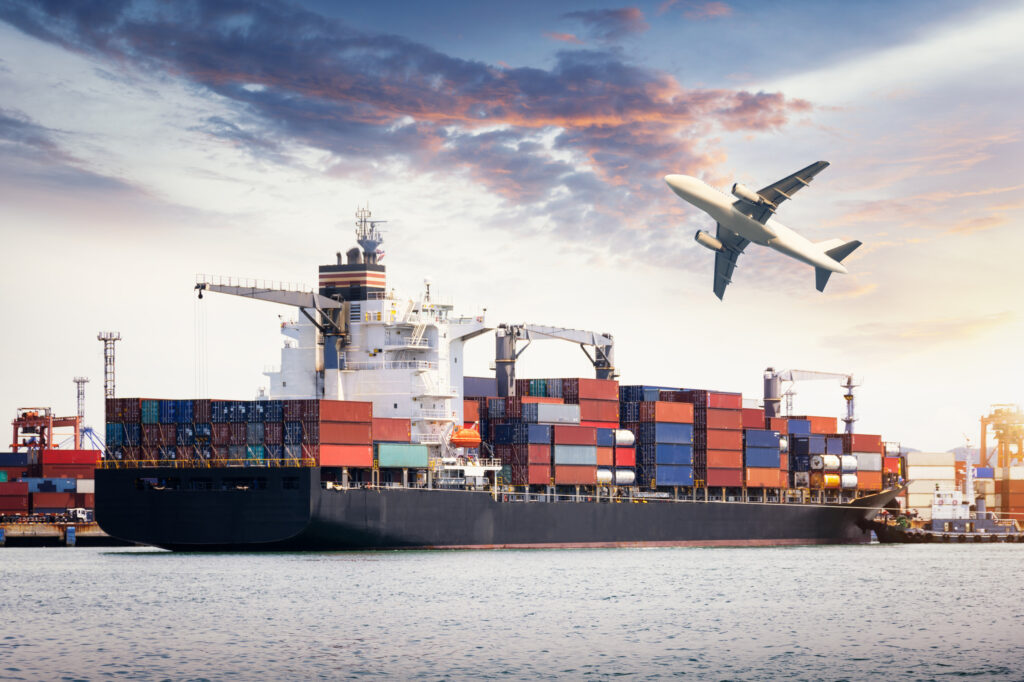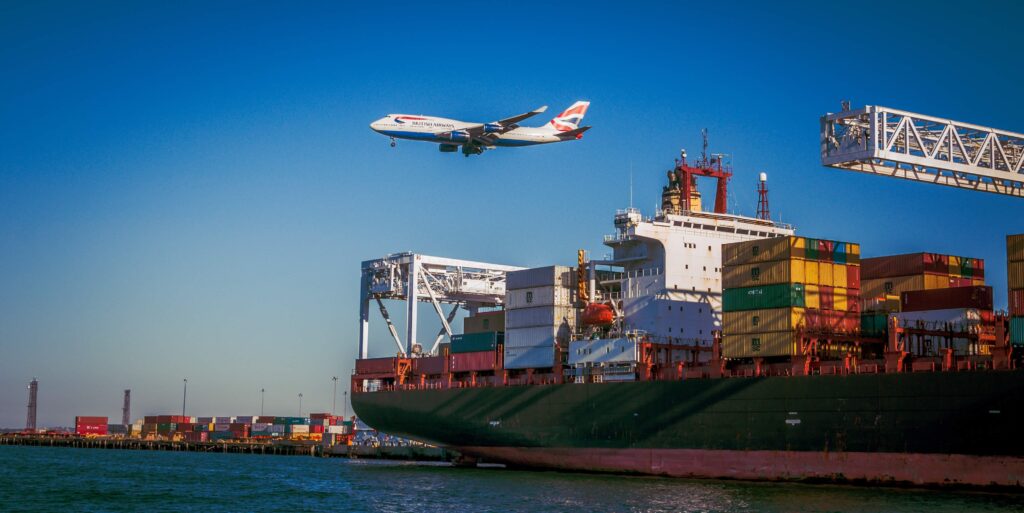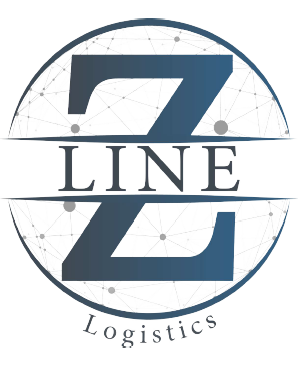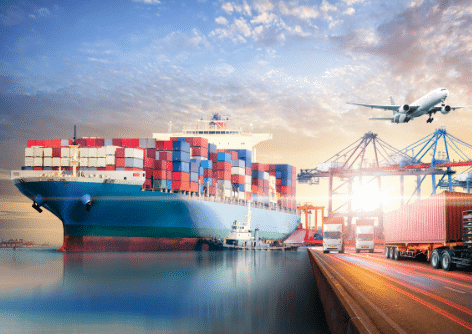Have you ever wondered how goods travel across the globe, from one country to another, from one port to the next? What are the types of freight forwarding?
Freight forwarding is the unsung hero behind global trade, ensuring products, raw materials, and goods reach their final destinations smoothly and efficiently.
But, with so many different services out there, how do you know which one is right for your business?
Depending on your needs—whether it’s cost-effectiveness, speed, or the volume of goods—there are several types of freight forwarding that cater to different shipping requirements.
In this blog post, we’ll break down 5 essential types of freight forwarding that every business owner or logistics manager should know about.
Understanding these options will help you choose the most effective shipping strategy for your needs, ensuring timely and cost-efficient deliveries.
Table of Contents
What is Freight Forwarding?

Freight forwarding might sound like a complex process, but it’s essentially the service that helps businesses move goods from one point to another across international borders.
Freight forwarders manage everything, from selecting the best routes and shipping methods (like air, sea, or land) to handling the necessary paperwork, permits, and customs regulations.
Their job is to ensure that your products are safely delivered to your customers on time, without any hitches.
Understanding freight forwarding is crucial for any business that deals with international trade, as it helps streamline the entire shipping process, making it more efficient and reliable.
Read more on How is AI Used in Supply Chain Management in 2025
The 5 Types of Freight Forwarding
When it comes to moving goods across borders, choosing the right type of freight forwarding can make a significant difference in cost, efficiency, and delivery time.
Freight forwarding is a complex but essential part of international trade, involving various methods of transportation.
Here’s an overview of the five main types of freight forwarding that every business should be aware of:
1- Full Container Load (FCL)
If you have enough goods to fill an entire container, Full Container Load (FCL) is the way to go.
With FCL, you’re using an entire shipping container exclusively for your products, which can be highly beneficial if you’re moving large quantities.
It’s a more secure option because your goods won’t be mixed with others, reducing the risk of damage or loss.
FCL is often faster because it doesn’t require unloading and reloading at intermediate points. Since the container is filled only with your goods, you also avoid the complexities and delays that can come with shared container space.
Read more on The Positive and Negative Impacts of the Amazon Effect on Freight in Dubai
2- Less Than Container Load (LCL)
Not every shipment is large enough to justify the cost of a full container, which is where Less Than Container Load (LCL) comes in.
With LCL, you share container space with other shippers, making it an ideal solution for smaller shipments.
Instead of paying for an entire container, you only pay for the space your goods occupy, making it a more affordable option for businesses that don’t have enough cargo to fill a full container.
LCL shipments might take longer to reach their destination because they require consolidation with other cargo, but they’re still a great way to reduce shipping costs without compromising too much on delivery time.
If you’re a smaller business or dealing with a one-off shipment that doesn’t fill a full container, LCL can be an excellent and cost-effective choice.
For more information: Amazon Effect on Supply Chain – A Breakthrough in The World of Supply Chain
3- Air Freight Forwarding
When speed is crucial, air freight is the solution. Air freight forwarding is used for time-sensitive shipments that need to get from point A to point B as quickly as possible.
Whether it’s high-value electronics, fresh produce, or other urgent goods, air freight ensures the fastest delivery times.
While it’s more expensive than sea or rail freight, the tradeoff is the speed and reliability of air transport.
For businesses that need to ensure their products reach international markets without delay, air freight is often the best option, especially when a deadline is looming.
Air freight is also ideal for smaller, high-value items, as it’s a more secure method of transport, with fewer opportunities for damage or theft.
Learn more: The Power of Global Sourcing in Supply Chain Management
4- Sea Freight Forwarding
If you’re not in a rush and need a more cost-effective way to move large quantities of goods, sea freight is likely the best option.
Sea freight is perfect for bulk shipments, particularly when you’re transporting heavy, non-perishable goods that don’t require fast delivery.
Although sea freight is slower than air, it offers significant savings for large or heavy shipments, making it the preferred choice for businesses that need to transport large volumes of goods over long distances.
It’s also more environmentally friendly than air transport, as it produces lower carbon emissions per unit of cargo.
Sea freight typically takes longer to arrange and requires more planning, but it’s well worth it if your business is focused on cost-saving and can handle longer transit times.
For more information: Exploring Global Sourcing Advantages and Disadvantages
5- Rail Freight Forwarding
In certain regions, rail freight is a game-changer. If you’re dealing with landlocked areas or regions with strong rail networks, rail freight offers a good balance between speed and cost.

Rail transport can be faster than sea freight and more affordable than air freight. It’s especially beneficial for shipping goods across large landmasses, like moving products between Europe and Asia or North America.
Rail freight is also a more sustainable option compared to road transport, producing fewer emissions and offering a smoother ride for sensitive goods.
While it might not be as widely available as other methods, rail freight is growing in popularity due to its cost-effectiveness, speed, and eco-friendly benefits.
For businesses shipping goods across vast distances on land, rail offers a reliable and efficient way to move large quantities of cargo.
Learn more on How is Blockchain Used in Logistics? 6 Uses You Need to Know About
While the world of freight forwarding can seem complex at first glance, understanding the different options available to you can help simplify your shipping decisions.
Each type of freight forwarding offers unique benefits, and selecting the right one can make a huge difference in the efficiency and cost-effectiveness of your logistics operations.
Whether you need a quick air freight solution, cost-effective ocean freight, or something more specialized, knowing your options is the first step.
And when it comes to finding a logistics partner who understands your specific needs and can help you navigate these options, Z Line Logistics is here to help.
With years of experience in the industry, we provide tailored freight forwarding solutions designed to fit your business perfectly.
Visit us today, and let’s work together to optimize your supply chain and ensure your shipments are delivered smoothly, on time, and within budget!




